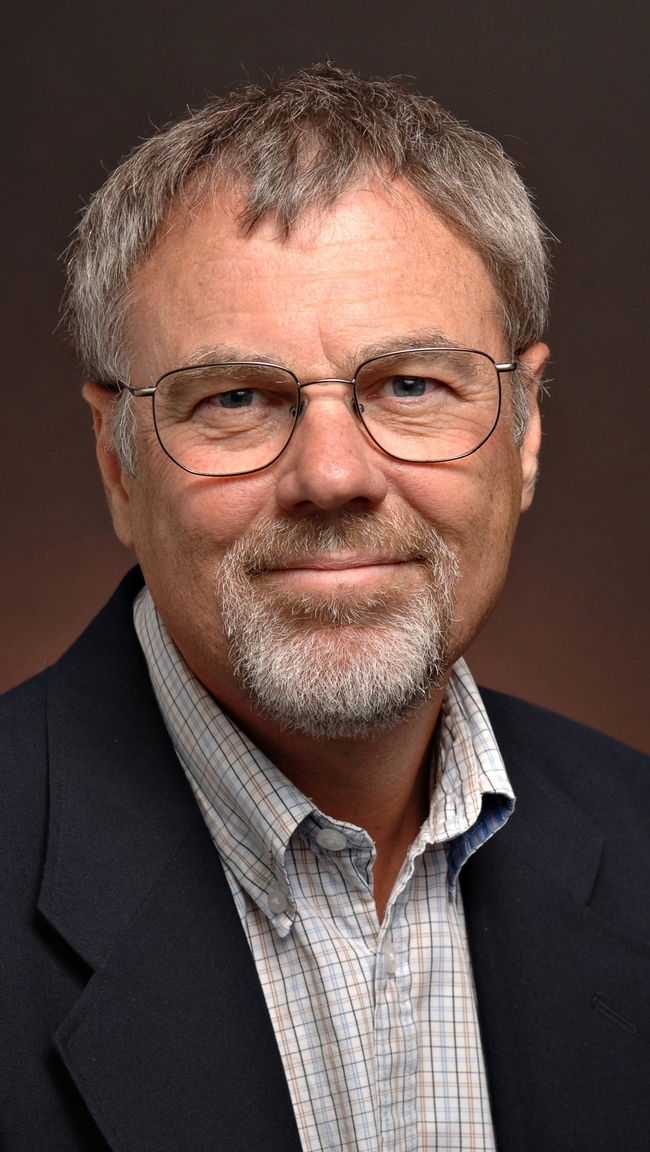
Societies to genes? And how do you get from there to here?
Noted honey bee geneticist Robert E. Page Jr., a UC Davis and Arizona State University emeritus professor and administrator, has authored a newly published, invited article in the journal Geneticson “Societies to Genes: Can We Get There from Here?” that highlights his three-decade scientific career.
“I was thrilled to be invited to write this perspectives/review of my scientific career; it is a collection of 30 years of single-minded focus on one question,” said Page, who is renowned for his research on honey bee behavior and population genetics, particularly the evolution of complex social behavior, and for his work on the first genomic map of the honey bee.
"The editors contacted me to write a perspectives/review that focuses on my own work, a study in complex adaptation,” Page related. “This is the first time they have done a perspectives article like this. I was, of course, honored. More than half of the work was done at UC Davis.”
“Understanding the organization and evolution of social complexity is a major task because it requires building an understanding of mechanisms operating at different levels of biological organization from genes to social interactions,” Page wrote in his abstract. “I discuss here, a unique forward genetic approach spanning more than 30 years beginning with human-assisted colony-level selection for a single social trait, the amount of pollen honey bees (Apis mellifera L.) store. The goal was to understand a complex social trait from the social phenotype to genes responsible for observed trait variation.”
“The approach,” Page wrote, “combined the results of colony-level selection with detailed studies of individual behavior and physiology resulting in a mapped, integrated phenotypic architecture composed of correlative relationships between traits spanning anatomy, physiology, sensory response systems, and individual behavior that affect individual foraging decisions. Colony-level selection reverse engineered the architecture of an integrated phenotype of individuals resulting in changes in the social trait. Quantitative trait locus (QTL) studies combined with an exceptionally high recombination rate (60 kb/cM), and a phenotypic map, provided a genotype–phenotype map of high complexity demonstrating broad QTL pleiotropy, epistasis, and epistatic pleiotropy suggesting that gene pleiotropy or tight linkage of genes within QTL integrated the phenotype. Gene expression and knockdown of identified positional candidates revealed genes affecting foraging behavior and confirmed one pleiotropic gene, a tyramine receptor, as a target for colony-level selection that was under selection in two different tissues in two different life stages. The approach presented here has resulted in a comprehensive understanding of the structure and evolution of honey bee social organization.”
Page, who received his doctorate in entomology (1980) from UC Davis, joined the UC Davis entomology faculty in 1989, and chaired the department from 1999-2004. In 2004, Arizona State University recruited him as founding director of its School of Life Sciences. His career advanced from dean of Life Sciences, to vice provost and dean of the College of Liberal Arts and Sciences, to university provost. Today he holds the titles of ASU provost emeritus, ASU Regents professor emeritus, and UC Davis distinguished emeritus professor, an award bestowed in 2019.
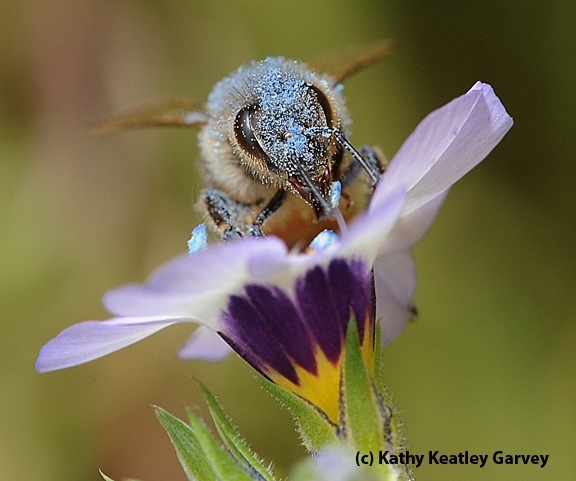
For 24 years, from 1989 to 2015, Page maintained a UC Davis honey bee-breeding program, managed by bee breeder-geneticist Kim Fondrk at the Harry H. Laidlaw Jr. Honey Bee Research Facility. Together they discovered a link between social behavior and maternal traits in bees.
In his article, he mentions: "I studied the behavioral genetics of pollen storage in honey bees for more than 30 years. The effort was collective with my technician and colleague Kim Fondrk and numerous students and postdoctoral researchers. We used a forward genetic approach and employed bidirectional, human-assisted selection that resulted in the establishment of two strains that varied in their expression of a social phenotype. We focused on just one trait, the amount of pollen stored in the nest, a social trait that is a consequence of the interactions of thousands of bees. There are about 10–40 thousand worker bees in a honey bee colony, depending on the time of year. Honey bee colonies have a reproductive division of labor where the single queen normally lays the eggs while the workers are facultatively sterile."
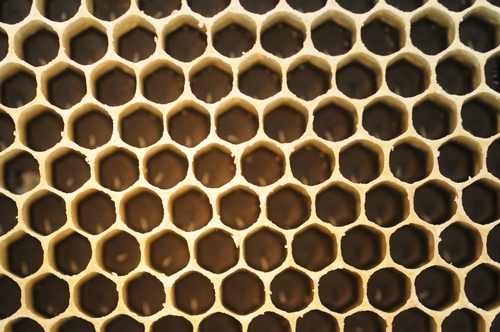
"Young larvae produce pheromones (chemical signals) that stimulate some of the foragers to collect pollen (Traynor et al. 2015)," he explained. "The amount of pollen stored, the number of cells that are full, affects the number of larvae that are raised and inhibits pollen foraging, thus stored pollen is regulated (Fewell and Winston 1992). Returning pollen foragers perform recruitment dances that communicate the distance and direction from the nest to their pollen sources. Other bees attend the dances and are recruited. So, the amount of stored pollen is dependent on the interactions of thousands of individual adults and larvae and is not a phenotypic trait of any individual—it is a social phenotype."
Page has authored than 250 research papers, including five books: among them, The Spirit of the Hive: The Mechanisms of Social Evolution, published by Harvard University Press in 2013. His most recent book is The Art of the Bee: Shaping the Environment from Landscapes to Societies, published by Oxford University Press 2020. (See news release on why bees are both artists and engineers.)
Page is a highly cited author on such topics as Africanized bees, genetics and evolution of social organization, sex determination, and division of labor in insect societies.
Attached Images:
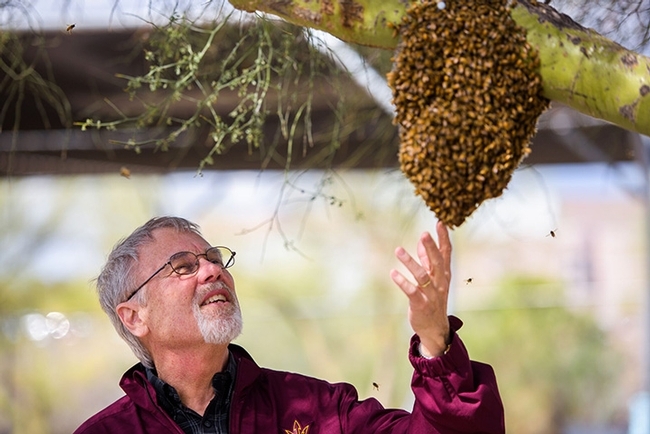
Honey bee geneticist Robert E. Page Jr. examines a swarm.
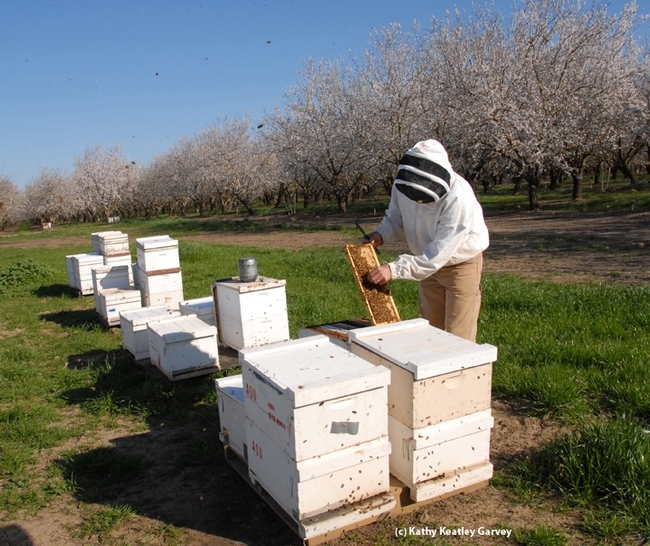
Robert E. Page Jr., maintained a UC Davis honey bee-breeding program, managed by Kim Fondrk, at the Harry H. Laidlaw Jr. Honey Bee Research Facility for 24 years. Here Fondrk checks on the UC Davis bees in a Dixon almond orchard. (Archived photo by Kathy Keatley Garvey)